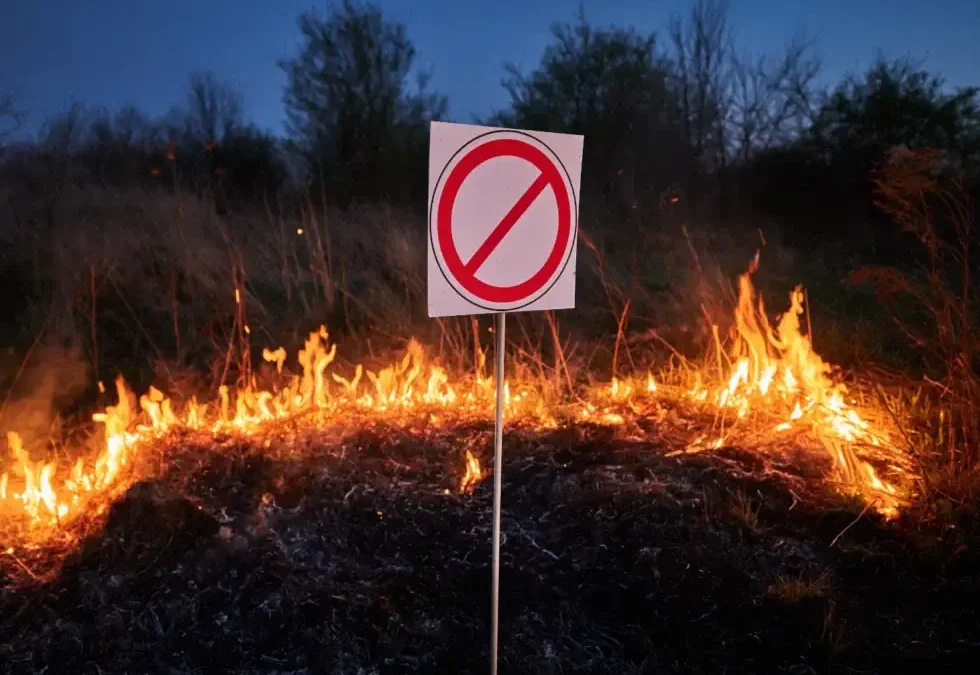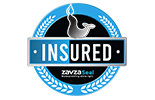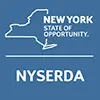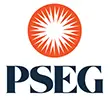All About Burn Bans in New York, Long Island, Brooklyn, and Queens: What You Need to Know
In light of the recent burn bans in Suffolk County, we wanted to share an essential guide to understanding burn bans and how they impact residents across Long Island, Brooklyn, Queens, and the Bronx. Whether you’re wondering if fire pits are included, what burn bans mean, or need the latest updates on burn bans in your area, we’ve got you covered. This comprehensive resource will clarify burn ban rules, provide borough-specific details, and help you stay informed about restrictions to keep your community safe.
What Does Burn Ban Mean?
A burn ban is a temporary restriction on outdoor burning, typically enforced to reduce wildfire risks or improve air quality. During peak wildfire seasons, such as spring in New York, the Department of Environmental Conservation (DEC) implements burn bans across the state to prevent fires caused by dry vegetation and high winds. These restrictions aim to protect homes, infrastructure, and natural ecosystems from potentially devastating fires.
The annual statewide burn ban in New York runs from March 16 through May 14, a period when wildfire risks are highest due to dry conditions and strong winds. Governor Kathy Hochul recently issued an early burn ban for Long Island, New York City, and parts of the Hudson Valley in response to brush fires in Suffolk County. This directive highlights the importance of adhering to burn ban rules to prevent further wildfire outbreaks.
What Is Allowed During a Burn Ban?
During a burn ban, certain activities are still permitted to ensure safety while meeting practical needs. Understanding what’s allowed helps you comply with regulations and avoid unintentional risks.
Here’s a quick breakdown of permissible actions during burn bans.
- Small cooking fires or fire pits, provided they:
- Are less than three feet in height and four feet in diameter.
- Use only clean, untreated wood or charcoal.
- Are never left unattended and are fully extinguished after use.
- Campfires and ceremonial bonfires, as long as they comply with size and material restrictions.
- Fires on agricultural lands for organic waste disposal (over five acres), with DEC approval.
- Prescribed burns for invasive species control, also requiring DEC approval.
What Is Prohibited During a Burn Ban?
During a burn ban, specific activities are strictly forbidden to minimize fire risks and protect public safety. Common prohibitions include open burning, campfires, and using fireworks. It’s crucial to understand these restrictions to ensure compliance and avoid penalties.
Here’s an overview of what is typically prohibited during burn bans.
- Burning brush, leaves, trash, and large debris piles.
- Burning treated or painted wood, composite materials, or pressure-treated wood.
- Using burn barrels or similar devices for trash burning.
- Burning loose leaves or leaf piles.
- Open fires for rubbish disposal in towns with populations over 20,000.
New York Laws on Open Trash Burning
The DEC enforces regulations under 6 NYCRR Part 211 (Air Pollution Prohibited) and 6 NYCRR Part 215 (Open Fires). These laws prohibit most types of open burning in urban and suburban areas, with limited exceptions for rural regions. Violations can result in fines starting at $500 and additional penalties for repeat offenses.
By following these guidelines and staying informed through resources like the New York State Fire Danger Ratings map, residents can help reduce wildfire risks and protect their communities. Let me know if you’d like further refinements!
Do Burn Bans Include Fire Pits?
Burn bans often raise questions about whether fire pits are allowed. The answer depends on the type of fire pit and the specific burn ban regulations in effect. In New York State, small cooking fires and backyard fire pits are usually permitted during burn bans, provided they meet safety requirements such as size limits (less than three feet high and four feet wide) and only use clean, untreated wood or charcoal. For residents of Brooklyn, Queens, Long Island, and the Bronx, stricter guidelines may apply. It’s always best to confirm with local fire departments or the New York State Department of Environmental Conservation (DEC) to ensure compliance. Fire safety is paramount, especially during high-risk seasons.
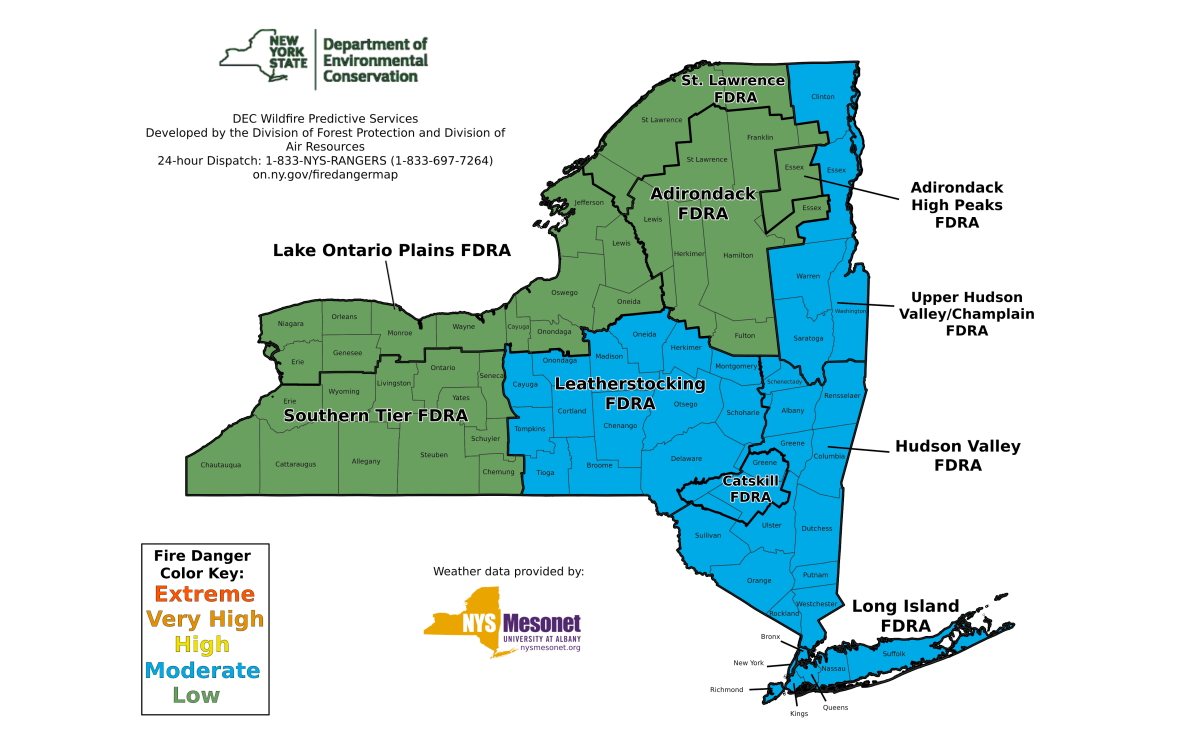
Is There a Burn Ban in My Area?
Burn bans are enforced both statewide and locally to reduce wildfire risks, especially during critical periods of dry weather and high winds. For daily updates on fire conditions, the New York State Fire Danger Ratings map (above in screenshot) serves as an essential resource. This map, maintained by the New York State Department of Environmental Conservation (DEC), provides real-time information on fire danger levels across the state, including areas like Long Island, New York City, and the Hudson Valley. Each day, the map is updated to reflect the latest conditions, offering crucial insights into fire risk levels categorized by color codes ranging from Low (Green) to Extreme (Red).
A recent example of burn ban enforcement occurred on March 9, 2025, when Governor Kathy Hochul issued an immediate burn ban for Long Island, New York City, and parts of the Hudson Valley in response to brush fires in Suffolk County. This emergency directive came as dry conditions, gusty winds, and low humidity created the perfect storm for fire hazards. Alongside the burn ban, the Governor declared a State of Emergency to facilitate rapid deployment of ground and air firefighting resources.
During emergencies like these, the New York National Guard and other state agencies mobilize to suppress wildfires. For instance, during the Suffolk County fires, helicopters conducted 88 missions, dropping over 24,000 gallons of water. State resources—including drones, bulldozers, and ground personnel—were deployed to monitor and contain fire outbreaks efficiently.
To stay informed, residents should regularly reference the Fire Danger Ratings map alongside updates from local borough fire departments and the DEC. Understanding these tools and localized rules is critical for compliance and supporting fire prevention efforts.
Burn Ban Rules
Burn bans are designed to mitigate wildfire risks by restricting outdoor burning. In the case of the March 2025 burn ban, Governor Hochul emphasized prohibiting the burning of brush, leaves, trash, and large debris piles in counties across Long Island, New York City, and the Hudson Valley. Small, contained campfires and backyard fire pits are typically permitted under strict conditions, provided they are no larger than three feet in height and four feet in diameter and use only clean, untreated wood or charcoal.
Safety measures are paramount, particularly during emergency periods declared by state officials. Violating burn ban regulations could result in hefty fines, starting at $500, along with potential criminal enforcement actions. Residents are also encouraged to contribute to fire safety by removing leaves and other debris near their homes to reduce ignition risks.
Adhering to these rules during heightened wildfire conditions not only protects homes and natural resources but also ensures that emergency responders can focus their efforts where they are most needed.
Borough-Specific Guidelines
Each borough must navigate burn bans while considering its unique challenges and risks. During emergency declarations like the March 2025 brush fires, additional precautions are often implemented to enhance public safety:
- Brooklyn: Emergency restrictions may further limit fire pit use, especially in densely populated areas, to mitigate fire risks.
- Queens: Residents must remain vigilant as local authorities often enforce stricter measures during elevated wildfire risks.
- Bronx: Neighborhoods may experience additional fire safety protocols due to increased urban density and proximity to vulnerable areas.
- Long Island: During the recent State of Emergency, Long Island witnessed intensified enforcement and resource mobilization due to the region’s unique vulnerability to wildfires.
Understanding these borough-specific measures during emergencies, in addition to statewide rules, is vital to staying compliant and protecting your community.
Final Thoughts
Burn bans are more than just regulations—they are vital measures to protect communities, natural resources, and lives during periods of heightened wildfire risk. Staying informed about burn bans, understanding the rules, and adhering to safety guidelines are essential steps for every resident. Whether you’re in Long Island, Brooklyn, Queens, or the Bronx, knowing how burn bans impact your area ensures compliance and contributes to the collective effort to prevent wildfires. Use resources like the New York State Fire Danger Ratings map and consult local fire departments or the DEC for updates. Together, we can safeguard our communities and preserve the environment.
FAQs
Is there a burn ban right now in New York?
Check the New York State Fire Danger Ratings map for daily updates on current burn bans.
What is prohibited during a burn ban in New York?
Burning brush, leaves, trash, treated wood, and large debris piles are prohibited.
Are fire pits allowed during a burn ban? \
Small, contained fire pits are generally allowed if they meet size limits and use clean, untreated wood or charcoal.
How long do burn bans last in New York?
The annual statewide burn ban typically runs from March 16 to May 14.
Who enforces burn bans in New York?
The New York State Department of Environmental Conservation (DEC) enforces burn bans, with local fire departments providing additional oversight.
Can I burn leaves in New York?
No, burning leaves is prohibited statewide.
What are the penalties for violating a burn ban?
Violations can result in fines starting at $500 and potential criminal enforcement actions.
How can I check if there’s a burn ban in my area?
Use the Fire Danger Ratings map or contact your local fire department for updates.
Why are burn bans issued?
Burn bans are issued to reduce wildfire risks during dry and windy conditions.
Are backyard fire pits allowed today?
Backyard fire pits are allowed if they meet safety requirements and are not prohibited by local regulations.

